Jahni Moore’s
WE Initiative:
A Journey Through Art, History, and Community Empowerment
By Carey Fountain
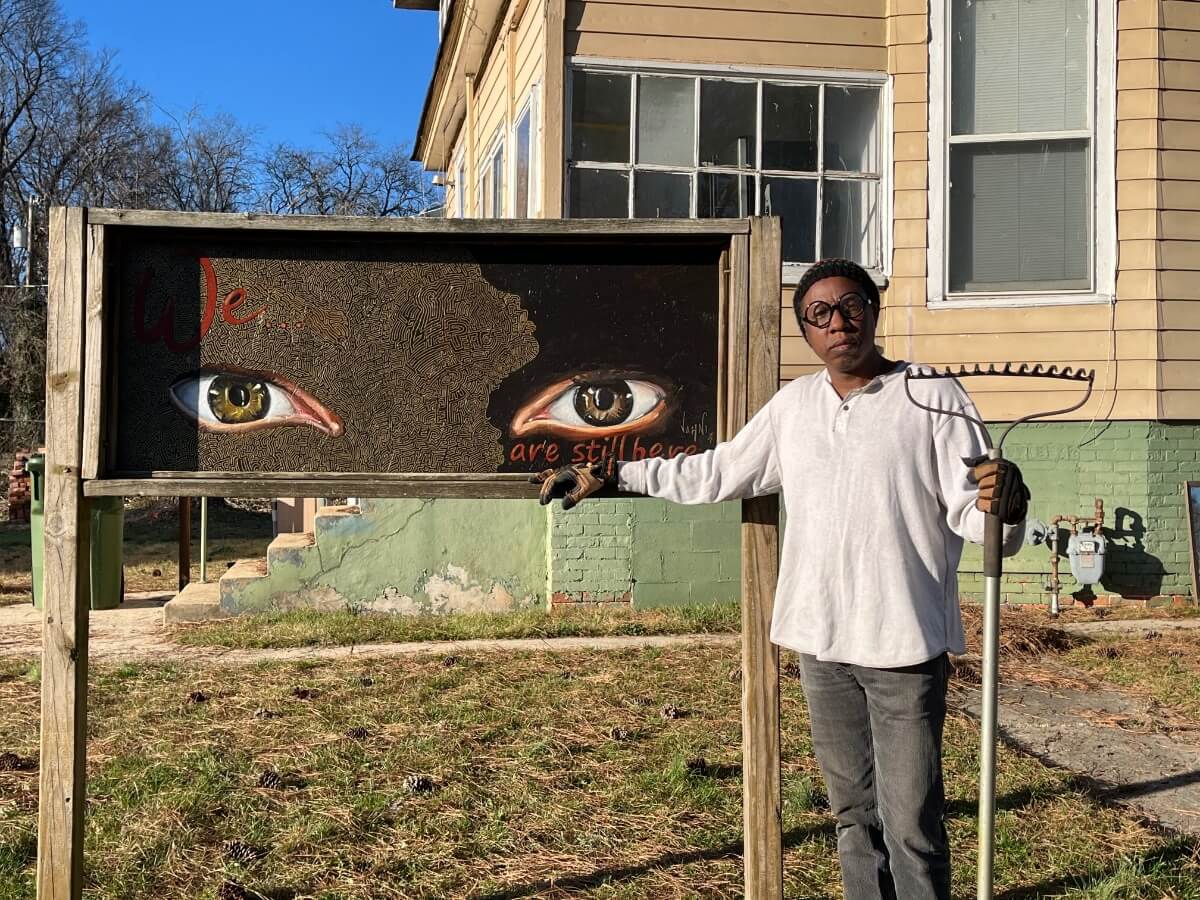
Southern Artists for Social Change awardee Carey Fountain writes about fellow awardee Jahni Moore and his work.
Jahni Moore’s latest endeavor, WE Initiative, is a vibrant fusion of art, history, and community activism centered in Huntsville, Alabama’s Magnolia Terrace.
This project, supported by the NPN’s Southern Artists for Social Change program, is more than an artistic expression; it’s a dynamic movement aimed at amending history and building a chosen future. Through this initiative, Moore seeks to bring attention to and re-establish the historical presence and culture of African American and Indigenous communities in Magnolia Terrace and its surrounding neighborhoods.
For Moore, WE Initiative is an articulation of a deeply held conviction that art can be a transformative force in society. Set against the backdrop of one of Huntsville’s oldest African American communities, this project is a poignant exploration of heritage and legacy. “This project is a journey into the past to illuminate the stories that have shaped us,” Moore stated. “It’s about using art to create a dialogue with history and carve a path for the future.”
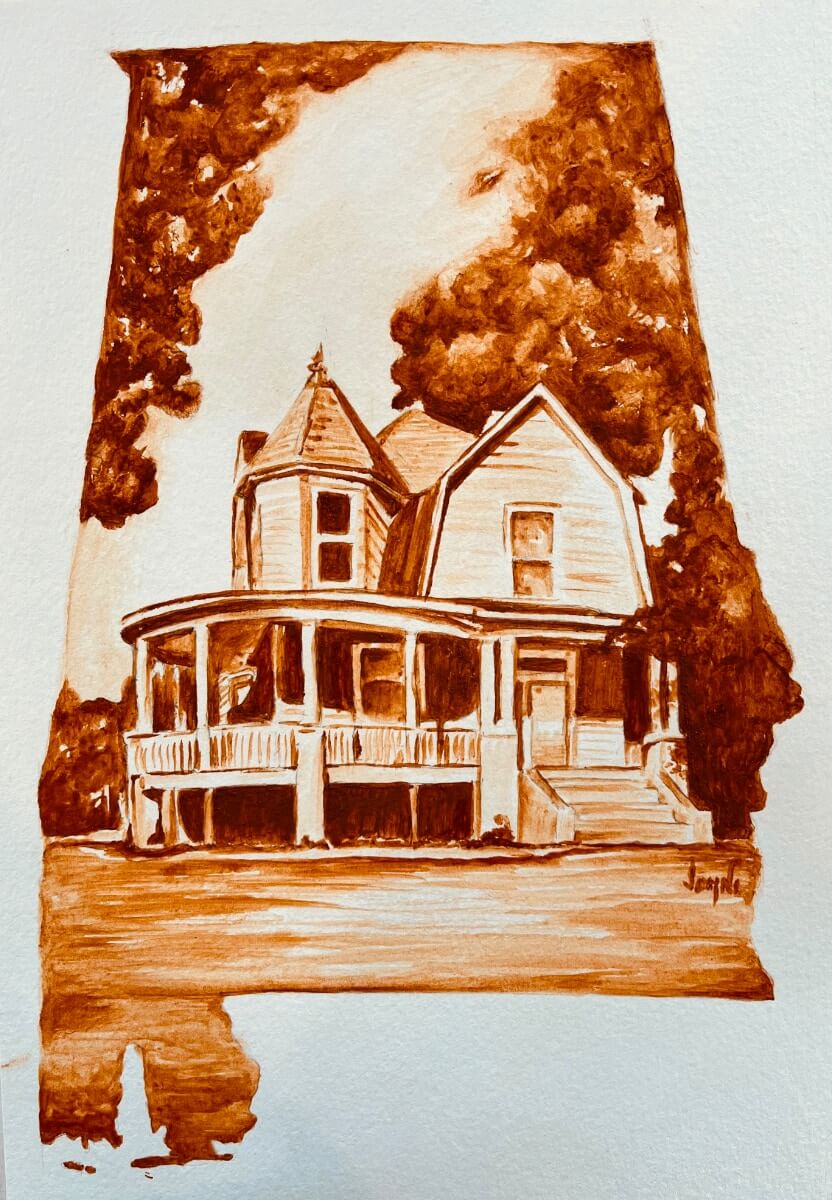
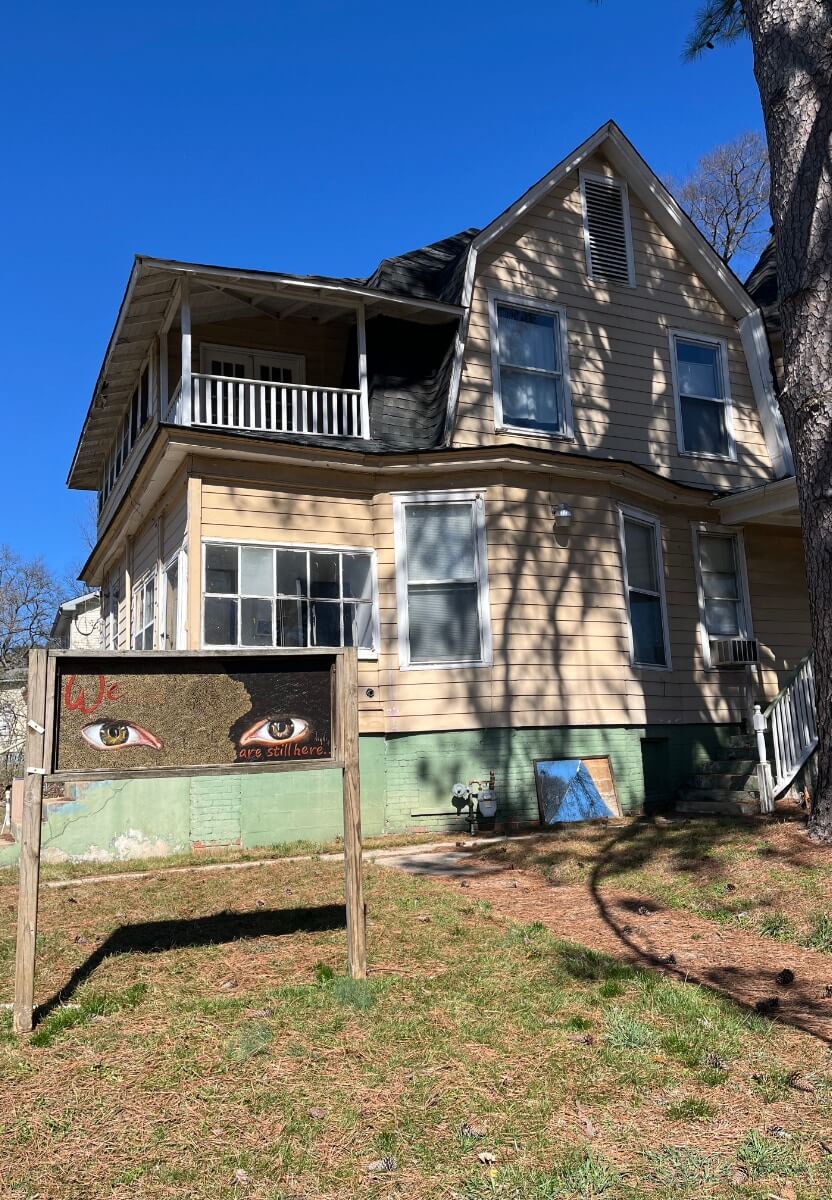
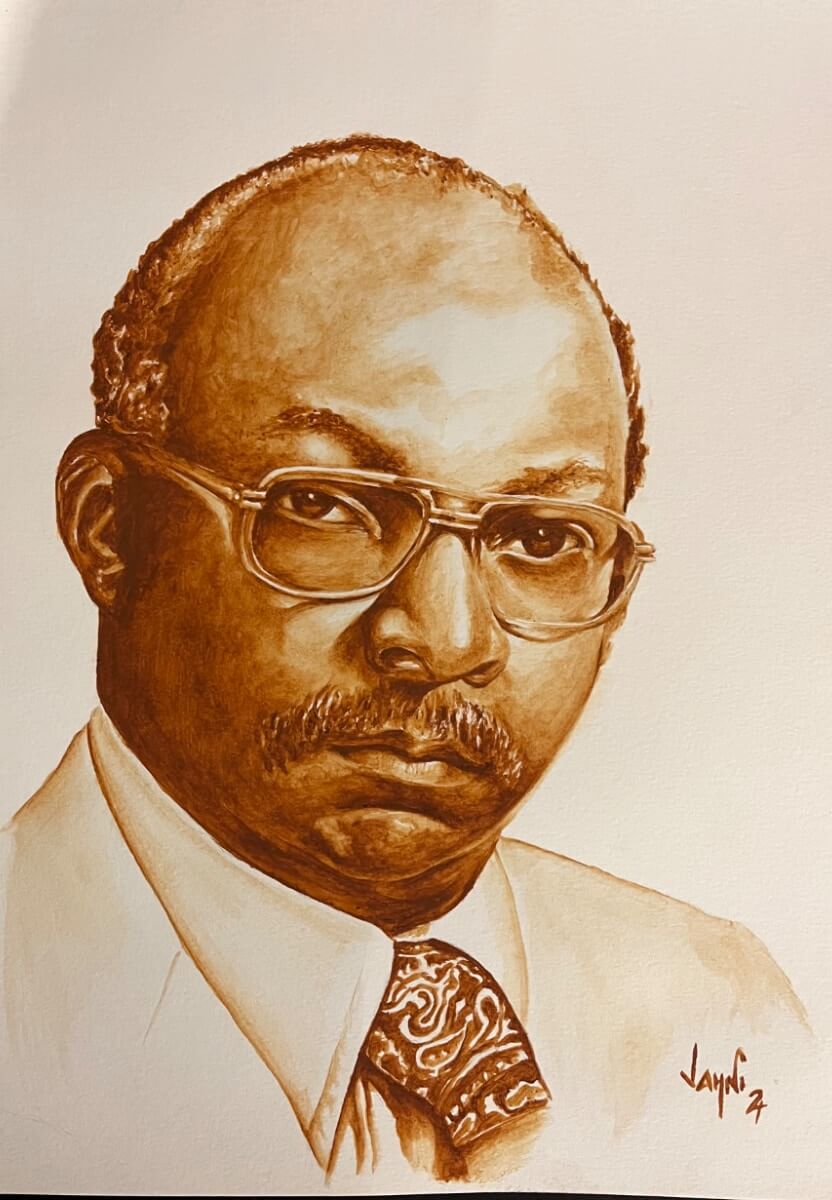
The Drake House is both a historical landmark with deep roots in the community and the heart of the WE Initiative. Owned by Joseph Fanning Drake, the fourth president of Alabama A&M University, and later occupied by his son, Dr. Harold F. Drake, the first African American physician at Huntsville Hospital, the Victorian property stands as a symbol of resilience and achievement. “The Drake House is more than a building; it’s a testament to the endurance and achievements of our community,” Moore said. “In transforming this space, we’re not just preserving history; we’re reactivating it.” Moore’s plans include a community art and history hub, turning .73 acres of legacy into a thriving center for creative and cultural exploration. The project involves hosting workshops, art exhibits, and community planning sessions, making the Drake House a dynamic focal point for cultural and artistic expression.
The initiative is designed to be a “creative groundswell,” a term Moore uses to describe the surge of artistic and cultural activities that will emanate from the Drake House. These activities are aimed at presenting the history of Magnolia Terrace through a contemporary lens, bridging the gap between past and present. “We are creating a space where the community can come together, learn, create, and envision a future that honors our past,” Moore explained.
Importantly, WE Initiative is not just about looking back. It’s also about re-establishing a sense of pride and communal engagement in Magnolia Terrace. Moore emphasizes the importance of “sweat equity”—the idea that investing personal effort and work into the community can lead to profound enrichment and revitalization. “In the spirit of the Drakes, we are working to rekindle a sense of community ownership and pride,” he noted.

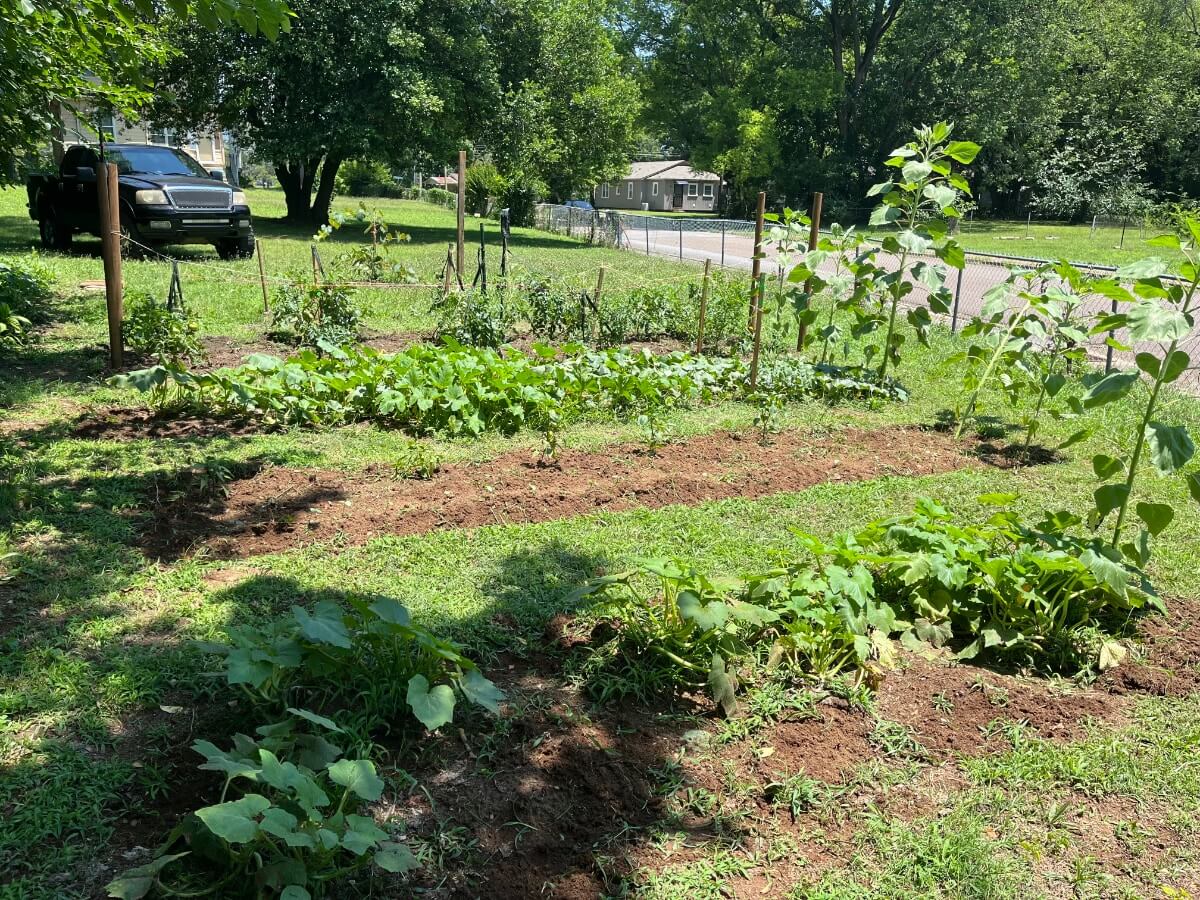
Reflecting on the broader implications of his project, Moore sees the WE Initiative as a model for how art can catalyze social change and community development. “This project is a microcosm of what’s possible when we harness art for community engagement and historical awareness,” he said. “It’s about creating a dialogue that’s rooted in our history but oriented towards our future.”
Looking ahead, Moore envisions the Drake House and WE Initiative project as a beacon for the community, inspiring future generations to engage with their history and culture actively. His project underscores the role of artists as vital agents in societal transformation, using their talents to foster community, understanding, and pride.
Jahni Moore’s WE Initiative is a groundbreaking project that marries art with historical and cultural preservation in Magnolia Terrace. It stands as a significant contribution to the discourse on community empowerment and cultural identity. Through this project, Moore not only celebrates the rich history of African American and Indigenous communities in Huntsville but also lays the groundwork for future community enrichment and cultural pride.
About Jahni Moore
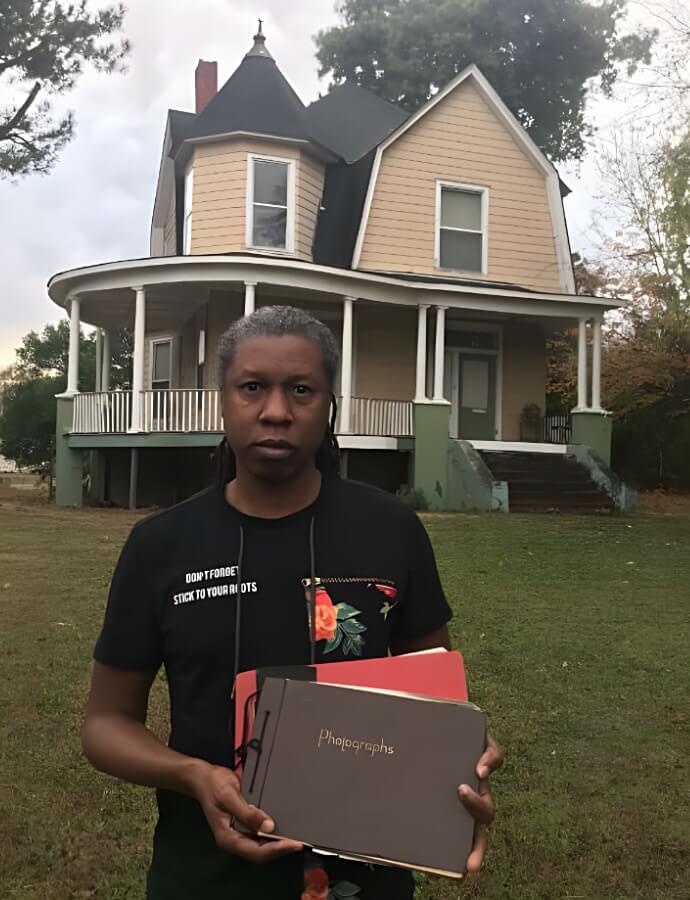
John “Jahni” Thomas Moore, born June 20 in Huntsville, Alabama, is an African American artist and art collector. With bachelor’s and master’s degrees in art from Alabama A&M University, Jahni has worked as an art instructor for years, teaching kindergarten to the college level, while maintaining a busy schedule as a prolific artist. When he “got to a place with art where I wanted to go deeper,” he studied at The Art Institute of Chicago, where he earned an MFA in studio arts in 2019. His public work is well known in Huntsville, where his first mural from 1999 is still on exhibit at Early Works Children’s Museum. One of his most well-known pieces, commissioned by Google Fiber, is the “Space Is Our Place” mural at Campus 805. “Space is our Place” was recognized in Parade Magazine as the best mural in Alabama in 2019. He has also painted murals in Chicago, Seattle, and South America and has won many awards for both creative and humanitarian accomplishments. Social commentary is a central theme to his artwork.
About Carey Fountain
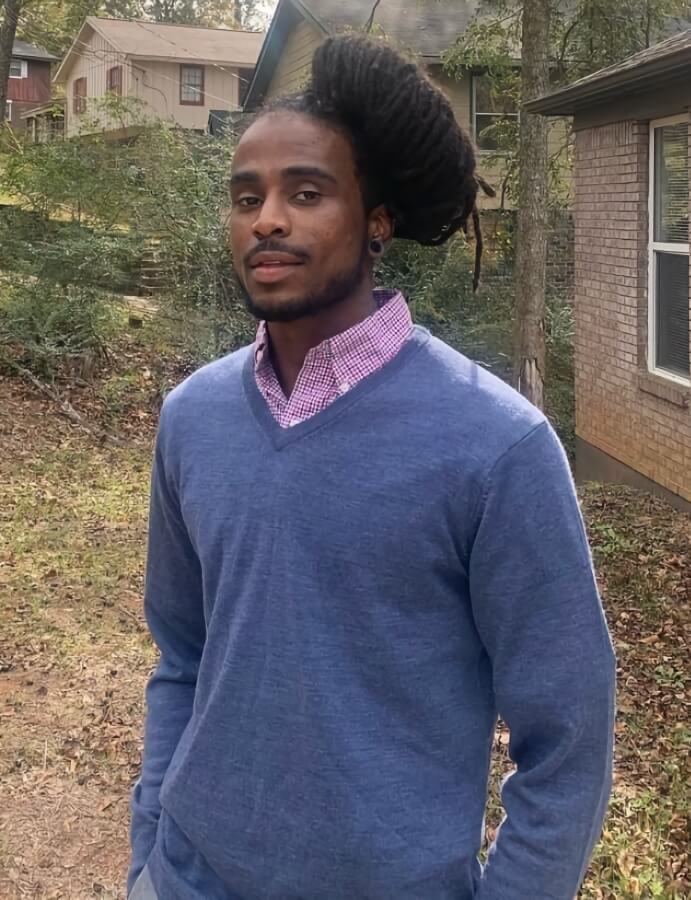
Carey Fountain’s artistic journey began with writing songs at the age of 11 and composing music soon after. Fountain works as a multidisciplinary artist and community organizer, working to build community through discourse and relationships that explore the human perception and how an informed perspective can transform identity. Fountain works as a musician, painter, muralist, videographer, photographer, clothing designer through his brand Vibes & Virtues and as the Manager of Public Programs at the Birmingham Museum of Art where he creates dynamic, inclusive programs at the Museum to support the BMA’s role as a vibrant and vital community resource.

